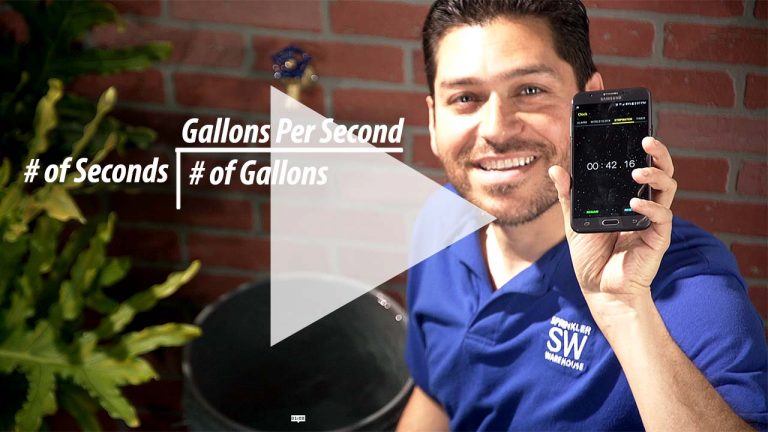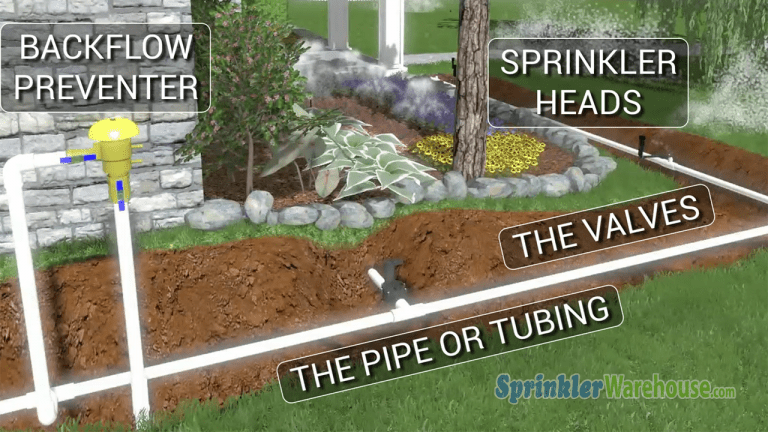Winterizing Your Sprinkler System In Cold And Moderate Climates
It’s winterization time! Here at Sprinkler Warehouse are trying to make sure that everyone is able to winterize their irrigation systems before the first freeze. Fortunately, here in Houston, we might go the entire winter not having to winterize, but do you really want to take that risk?
I will go over exactly what you will need to do in order to get your pipes and backflow devices prepared for the cold weather.
In Cold Climates:
Insulating your irrigation system’s backflow preventer will be the most important step to take when winterizing in a cold climate. In cold climates, occasional late and early season freezes occur and can damage your equipment. Using a small amount of self-sticking foam insulating tape should be sufficient. However, be sure to not block the drain outlets or the air vents. Otherwise, try using some R-11 fiberglass insulation. Wrap it around the backflow preventer, then use duct tape to secure a plastic bag around the whole thing. Don’t secure it too tightly – just tight enough to keep it from blowing off. Click here to learn more about how to winterize in cold climates.
In Moderate Climates:
Far fewer steps are required in a moderate climate where it does not freeze, or only freezes for a few hours at a time. The water supply must still be shut off and you will also need to shut down the timer or controller as well. The timer may be set to rain mode, especially if it is a solid state, digital display controller. Doing this can save you a great deal of time and means that you won’t have to reprogram the entire thing when spring rolls back around.
Gear-driven rotor sprinklers that are above ground must be drained, or the water can freeze, expand and damage them. If the water doesn’t drain out on its own, a drain valve will need to be installed on the sprinkler supply line. Otherwise, you can remove the rotors and shake them out thoroughly; in that case, you should then store them for safekeeping until spring. Click here to learn more about how to winterize in moderate climates.
Difference Between the Three Methods of Winterization?
The most important step of the winterization process is removing the water from the system’s pipes and sprinklers so that it doesn’t freeze, expand and burst everything. There are a few different ways of approaching the problem: using a shop vacuum to suck all of the water out (a very time-consuming and aggravating process), draining the water out via the system’s drain valves or using air to blow all of the water out (also known as a sprinkler system blow out)
Manual Drain Valve:
This method is required if your manual drain valve is located at the lowest point. Your manual valve will either be a ball valve, stop and waste valve, or a globe valve. Make sure that after the water has drained out of the mainline you drain the water that is between the shut off valve and the backflow device. This will not remove the water from your backflow device or your sprinklers. Open the test cocks on your backflow device to enable the water to flow out. If your sprinklers have check valves make sure to raise them so that the water drains out.
Automatic Drain Valve Method:
Drain Valves are typically located on the ends and low points of your sprinkler system. They drain the water when the PSI is below 10 PSI. Activate a station to release pressure and to get the automatic drain valves going. This method saves a great deal of frustration. As with the other methods you will need to drain the water out of the backflow device and your sprinkler heads. In some instances you might have both a manual and an automatic drain valve. If this is the case you have to follow the above method for manual drain valves as well.
Blow Out Method:
Extreme caution must always be taken when blowing out an irrigation system with compressed air. Compressed air can cause serious injury from flying debris. Always wear approved safety eye protection and do not stand over any irrigation components (pipes, sprinklers, and valves) during air blow out. Serious personal injury may result if you do not proceed as recommended! It is best for a qualified licensed contractor to perform this type of winterization method. For a complete step-by-step guide on how to use the blow out method follow this link:
Contact A Professional:
Sprinkler Warehouse recommends contacting a professional for any winterization tips and deals for blow outs since this is the most dangerous method if done without a professional.
Now that you know the steps to winterizing your irrigation system, it is important to take the necessary steps for your home and budget. Before I leave y’all, here is a picture that we won’t see down south but basically gets the point across as to why you should winterize everything this is in someone’s garage!



























